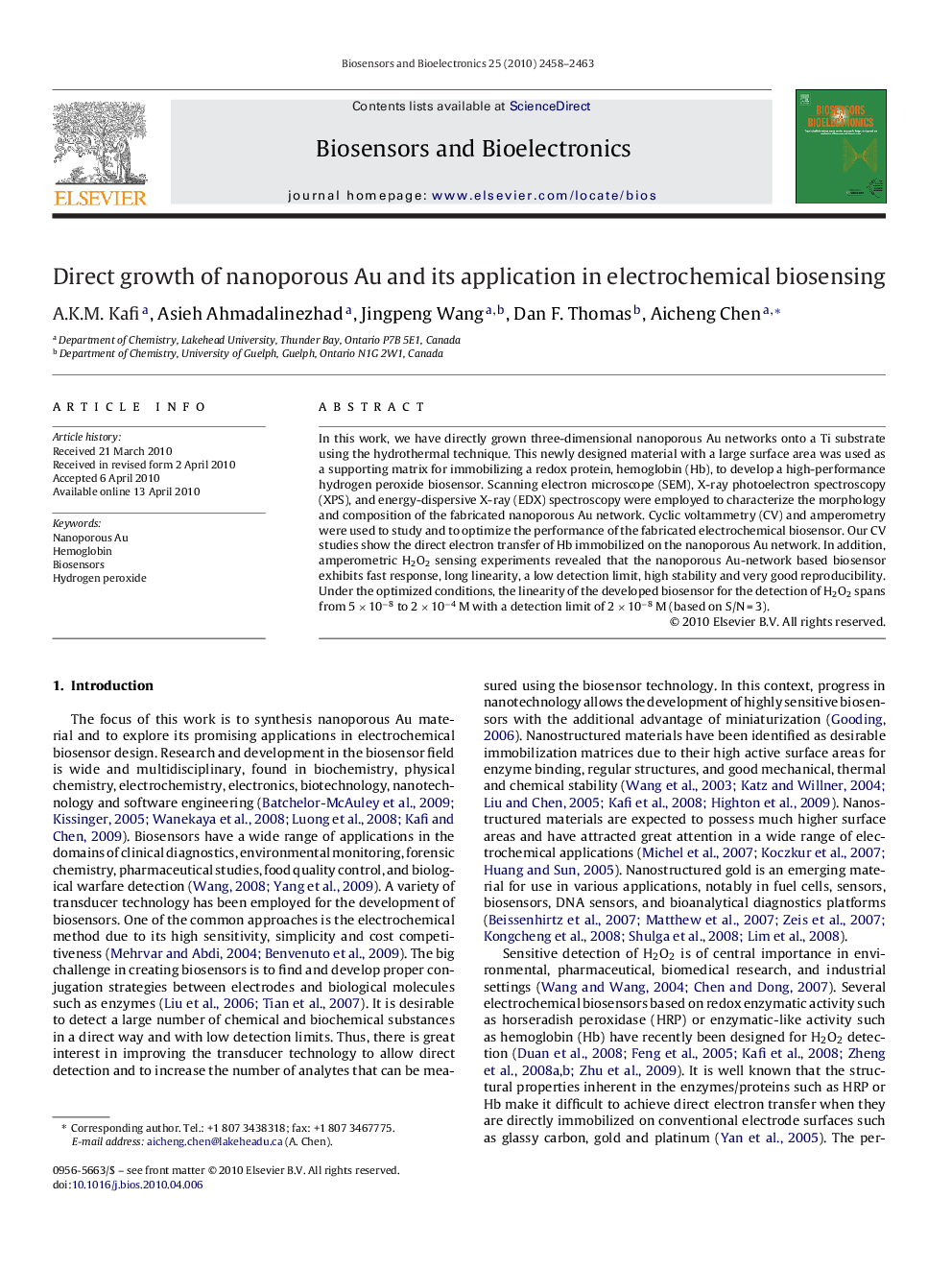| Article ID | Journal | Published Year | Pages | File Type |
|---|---|---|---|---|
| 868965 | Biosensors and Bioelectronics | 2010 | 6 Pages |
In this work, we have directly grown three-dimensional nanoporous Au networks onto a Ti substrate using the hydrothermal technique. This newly designed material with a large surface area was used as a supporting matrix for immobilizing a redox protein, hemoglobin (Hb), to develop a high-performance hydrogen peroxide biosensor. Scanning electron microscope (SEM), X-ray photoelectron spectroscopy (XPS), and energy-dispersive X-ray (EDX) spectroscopy were employed to characterize the morphology and composition of the fabricated nanoporous Au network. Cyclic voltammetry (CV) and amperometry were used to study and to optimize the performance of the fabricated electrochemical biosensor. Our CV studies show the direct electron transfer of Hb immobilized on the nanoporous Au network. In addition, amperometric H2O2 sensing experiments revealed that the nanoporous Au-network based biosensor exhibits fast response, long linearity, a low detection limit, high stability and very good reproducibility. Under the optimized conditions, the linearity of the developed biosensor for the detection of H2O2 spans from 5 × 10−8 to 2 × 10−4 M with a detection limit of 2 × 10−8 M (based on S/N = 3).
